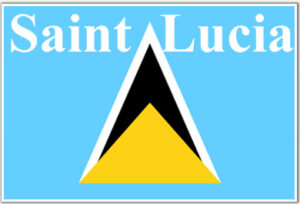 The education system of Saint Lucia was designed to promote the education of its people, to develop their basic knowledge, and to instill the importance of family, community, and a Caribbean identity within them. The Ministry of Education, Human Resource Development, and Labour regulates the education system and overseas curriculum development, early childhood education, technical and vocational education training, and examinations.
The education system of Saint Lucia was designed to promote the education of its people, to develop their basic knowledge, and to instill the importance of family, community, and a Caribbean identity within them. The Ministry of Education, Human Resource Development, and Labour regulates the education system and overseas curriculum development, early childhood education, technical and vocational education training, and examinations.
School attendance is compulsory for students in Saint Lucia from the ages of 5 to 15. The education system is structured into Pre-school, Infant (grades 1 to 2), Junior Primary school (grades 3 to 6), Senior Primary school (years 1 to 3), Secondary school (forms 1 to 5), and Post-secondary school. Traditionally there was a test following the completion of Junior Primary school to determine if the student would be accepted into secondary school or if they would instead attend Senior Primary school. However, with the implementation of Universal Secondary Education in 2006/2007, senior primary school has been phased out.
Secondary school in Saint Lucia culminates with the Caribbean Secondary Education Certificate (CSEC), awarded by the Caribbean Examinations Council. This certificate allows for admission to post-secondary institutions and is graded as follows:
|
Overall Grades |
Profile Grades |
Description |
|---|---|---|
|
I |
A |
Candidate shows a comprehensive grasp of the key concepts, knowledge, skills and competencies required by the syllabus. |
|
II |
B |
Candidate shows a good grasp of the key concepts, knowledge, skills and competencies required by the syllabus. |
|
III |
C |
Candidate shows a fairly good grasp of the key concepts, knowledge, skills and abilities required by the syllabus. |
|
IV |
D |
Candidate shows a moderate grasp of the key concepts, knowledge, skills and competencies required by the syllabus. |
|
V |
E |
Candidate shows a very limited grasp of the key concepts, knowledge, skills and competencies required by the syllabus. |
|
VI |
F |
Candidate shows a very limited grasp of the key concepts, knowledge, skills and competencies required by the syllabus. |
For post-secondary education the principal grading scale is that of the Sir Arthur Lewis Community College:
|
Grade |
Description |
Grade Point |
|---|---|---|
|
A+ |
Excellent work |
4.00 |
|
A |
|
3.75 |
|
A- |
|
3.50 |
|
B+ |
Good work |
3.25 |
|
B |
|
3.00 |
|
B- |
|
2.75 |
|
C+ |
Satisfactory work |
2.50 |
|
C |
|
2.25 |
|
C- |
|
2.00 |
|
D* |
Poor work but passing |
1.00 |
|
F |
Unsatisfactory work |
0.00 |
* “D” is a failing grade for some courses.
The curriculum for Primary and Secondary education is governed by The Curriculum and Materials Development Unit (CAMDU), a department of the Ministry of Education that was established in 1976. The curriculum varies in Primary and Secondary Schools and in the upper forms students are allowed to select some of their courses. Subjects in the CAMDU’s curriculum include: Education Media Technology, English Language, Health and Family Life Education, Information Technology, Mathematics, Modern Languages, Music, National Science and Technology, Physical Education, Social Sciences, and Theatre Arts.
Students who have achieved the CSEC may continue on to post-secondary study in Saint Lucia. The only higher education institution based exclusively on the island is the Sir Arthur Lewis Community College; however there is also a branch of the University of the West Indies.
Credentials in Saint Lucia are earned following the completion of secondary school and the completion of postsecondary school programs. Following secondary school, students interested in pursuing further education take the CSEC and those students who pass can attend postsecondary institutions to pursue degrees such as a two-year Associate’s degree, a four-year Bachelor’s degree, or more specialized degrees.
© 2025 Gaetranslations | Terms & Conditions
Website by: Timefortheweb